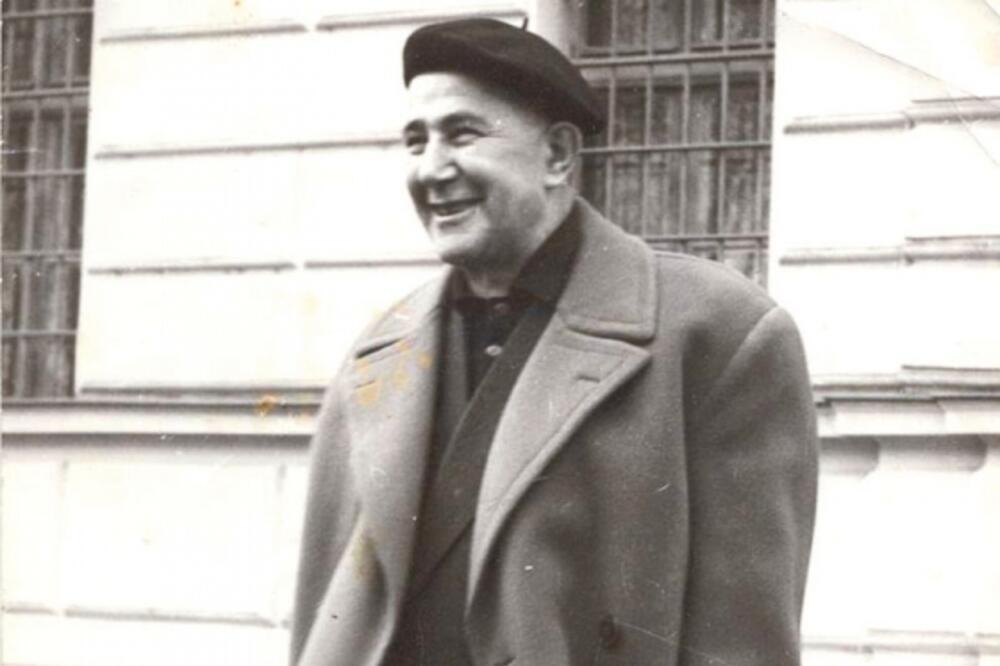(Continued from last Saturday)
Human heads fly in this novel both in those highly mimetic passages, where armies and rulers clash, as well as in zones of low memesis, when neighbors and relatives are satirized. Đilas reminds us of the flight of the head of Smile-age Čengić, which Petar II Petrović Njegoš excitedly throws up several times as a trophy brought to him, but he also shows us all those severed heads of ordinary people, such as the head of his grandfather left as an ominous sign on a deserted meadow, or the head of a Turkish soldier that levitates over a key of blood from the neck in bedtime stories. Those trivialized heads, both those seen and those unknown, are part of the Requisites of the Landless Land that reveal to us the deepest layers of the tragic destiny of a space in which human life could not deserve the reverence shown to human death for so long. That is why in Montenegro, death almost always triggered theatrical macabre rituals. In addition, she enabled women's voices to enter the space of public speech through laments, inspired speakers at the cemetery agoras of villages and tribes, expanded the lungs of the fiddler and the pupils of his listeners. For the consciousness of the Montenegrins galvanized by the epic, death offered both inspiration and promotion. She was rarely accompanied by quiet regrets, but she could almost always count on a spectacle.
Although in most of his narration, Đilas does not deviate from the conventions of a realistic novel, modernist excursions often appear in it through comments, essayistic passages, and sometimes, it seems, the author clearly refers to some literary and mythical narratives. Thus, in the event of the murder of the author's grandfather, who will be brutally executed after which his decapitated body and head will be left in the meadow, we can detect a reference to Sophocles' Antigone. Namely, the violent people who committed this crime, guided by the expectations of the ruling house, will not allow the head of the murdered person to be buried with the body, thus they will try to extend the effect of the punishment, because for the family of the murdered person, not burying his head is a tragedy equal to the murder itself. The heroic undertaking of the fifteen-year-old daughter of the murdered man, who will be the only one who dares to bring her father's head, is a female act of rebellion against the force of male revengeful authority, similar to that which Antigone dared. The whole event is imbued with an atmosphere in which the motifs of ancient epic and drama function - the revenge of the vain ruler and his camarilla, the betrayal of the godfather who will lure the unruly, the girl's heroic act that takes place under the cover of night in a swollen stream, in which she risks her life to hold her father's convulsively severed head, the pictures are also situations that, with their expression and sharpness, irresistibly remind of some ancient tragedies. From that epic and tragic register, Đilas most often starts when, above all in the section "Blood and cannons", he steps behind the bloody events.
A large part of this novel takes place precisely in those spaces, in which the reader is faced with an uncompromising unfolding of the dark side of the life of a tribal and warrior society, which is a topic towards which Montenegrin writers generally showed a high degree of courtesy. If it were not for Lalić, Bulatović and Đilas, Montenegrin literature would have been deprived of that serious literature that is always necessary to illuminate the dark corners of history and characterology, and thus left at the level of bloodless chronicles and mere, for the literary genesis of unproductive, lists and descriptions of memorabilia. Đilas may have gone the furthest in this novel. The continuous, cyclical movement of bloody and violent reality in the Bloodless Land becomes even more problematic when it is known that all the events and characters in this fiction are borrowed from reality. That's why it's no wonder that many readers, and among them quite a few professional ones, perceived Besudna zerma as a brutal depiction of a space and time from which the author only extracts darkness and stumbles, ignoring his virtues and "bright examples". Precisely by disturbing that ossified courtesy - which was present in Montenegro for a long time, both in the mostly self-imposed prudence of writers and in the expectations of readers - Besudna zemlja performed one of the most important subversions in the history of Montenegrin literature. It should be pointed out that the subversiveness of this novel is not only manifested on broader social, historical and mental levels, but also covers the author's privacy. That is why Đilas's journey through his own genealogy takes place without the insight and mystification characteristic of Montenegrin biographies, and thanks to this low-voltage censorship, violence, arrogance, despondency, and calculation often break through the character of the author's ancestors and relatives. The fact that Đilas, in his genealogical survey, does not turn his eyes away from the troubles or the troubles, is not only a product of the author's honorable need to examine his own as well as the society to which he belongs, but also the desire to point out the causal connection between private and public antagonisms. They are triggered by a similar mechanism in the parts of the novel that deal with that fateless country, as well as when the author illuminates the dark corners of family history.
In the descriptions of moral failure, revealed by occupations and wars, very radical observations can be found in several places in the novel, above all in those speculations in which the author takes the position of an advocate of evil as an ontological category. Thus, at the end of a short summary of the painful conditions imposed by the Austrian occupation, we will be greeted by a drastic conclusion according to which this unimaginable evil is not only a product of the sufferings of war that awakened the beast in the people of the author's homeland, but that it is also a part of their character: "People cursed and persecuted - one does not give the other air to breathe. The bestilucs and the pagans in the house, in the village, make people's misfortune itself be forgotten for a moment. These vices are ours, Montenegrin and domestic. If it would have multiplied with the occupation, again the Austrian power did not bring them within itself and pour them into our people. They carried it in themselves, all that was needed was for the restraints to loosen." In this observation, the motif of dark birth and homeland is recognizable, which in interwar Yugoslav literature could often be found in the works of writers whose subversions were directed towards the patriotic sentiment of the then, primarily, Serbian literature. Likewise, it should be said that this motive was also dissonant in the ruling didactic-humanist worldview of the literature that was written in socialist Yugoslavia at the time of the creation of Besudna zemlja. All of this places Đilas in the ranks of authors who, already at the beginning of the fifties of the 20th century, introduced into their prose what would become essential elements of later literary subversions towards the patriotic and didactic-humanistic role of literature, such as anti-patriotism and covert, but also direct misanthropic provocations. . That is why it could be said that in the cynicism and irony of the generation of Montenegrin prose writers who entered the literary scene at the beginning of the 21st century and how one can hear the echo of Besudna zemlje, regardless of the fact that rarely any of the authors of that wave cited this novel as an essential part of your reading.
(Continued next Saturday)
Bonus video:





